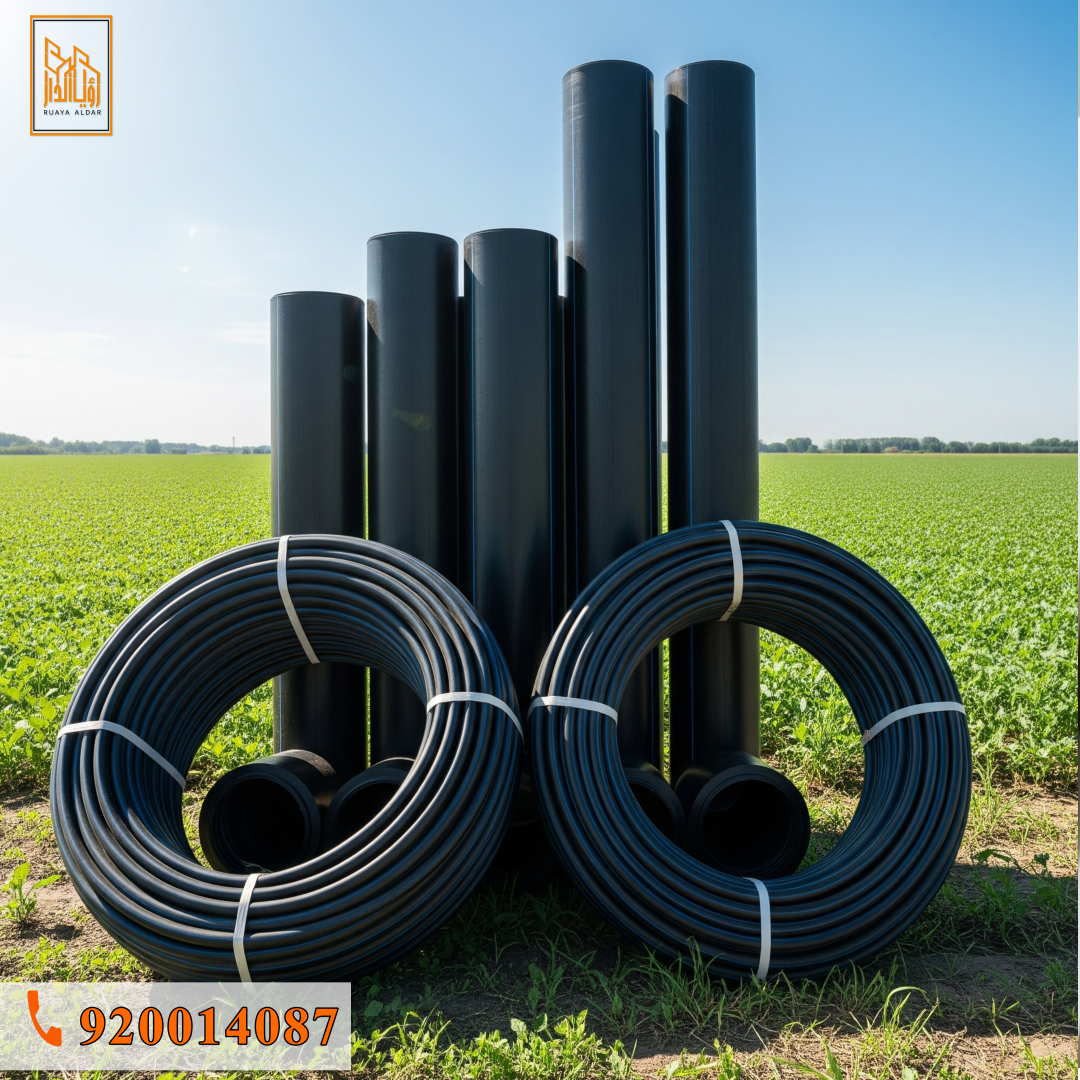
Your Ultimate Guide to Choosing the Right Pipe Diameter for Your Irrigation System: Efficiency & Water Savings
Modern irrigation systems are the backbone of successful agriculture and landscaping, especially in regions where water is a scarce and valuable resource. One key factor in designing an efficient irrigation system is selecting the correct pipe diameter.
Did you know that choosing the wrong pipe size can lead to water waste, poor irrigation performance, and even long-term damage to your system?
In this article, we’ll walk you through a simple guide to help you determine the ideal pipe diameter based on your land size and irrigation setup, along with the key factors that may influence your decision.
What Pipe Diameter Suits Your Land Size? A Basic Guide:
Based on well-established irrigation design principles, here’s a quick reference to help you choose the right pipe diameter for your irrigation network:
- For Small Plots (Less than 1 Dunam): 16mm Pipe – The Practical Solution
For small areas, water demand is relatively low. A 16mm pipe—commonly used in drip systems—is ideal. It provides sufficient flow for limited areas, is cost-effective, and easy to install and manage. - For Medium Plots (1–5 Dunams): 20mm to 25mm Pipes – Balanced Distribution
As land size increases, so does the water demand. A pipe diameter of 20mm to 25mm is recommended. This range ensures sufficient flow and pressure to cover the entire area evenly, avoiding water shortages at the edges. - For Large Plots (Over 5 Dunams): 32mm Main Lines with Smaller Branches – Flexibility and Performance
Larger areas require more complex planning. It’s highly recommended to use 32mm main pipes to carry water from the source to primary distribution points. This reduces pressure loss across long distances and ensures consistent flow. These main lines can then be connected to smaller branch pipes that cater to specific zones based on their needs.
Additional Factors That Affect Pipe Size Selection (Critical Considerations):
While the basic size guide provides a great starting point, several other important factors should be considered for an optimal setup:
- Water Flow Rate and Source Pressure:
Whether you’re using a pump, a well, or a municipal supply, the pressure and flow rate will directly affect the pipe size. Lower pressure systems may require larger diameters to compensate for pressure drops. - Type of Irrigation System:
Different systems (drip, sprinklers, mini-sprayers) have different flow and pressure requirements. For example, sprinklers typically need larger pipes than drip lines. - Land Topography:
Changes in elevation (uphill/downhill) influence water pressure. Uphill runs may reduce pressure and require larger pipes to maintain performance. - Pipe Length:
The longer the pipe run, the more pressure loss due to friction. In long runs, increasing the pipe diameter helps reduce this loss. - Crop Type and Plant Density:
Water needs vary with different crops and planting densities. High-demand crops or dense planting will require higher flow rates—and potentially wider pipes. - Future Expansion Plans:
If you plan to expand your irrigated area, consider installing slightly larger main lines now to avoid reinstallation later. - Budget Constraints:
Larger diameter pipes are typically more expensive. You need to balance system efficiency with your available budget.
Key Takeaways:
- Choosing the right pipe diameter is not optional—it’s essential for water efficiency and optimal system performance.
- Start with the basic guide by land size, but always consider other critical factors like pressure, flow rate, terrain, and future expansion.
- Consult a professional: For large or complex areas, it’s highly recommended to consult an irrigation engineer or specialist. They can help you design a customized system that meets your needs and maximizes water efficiency.
We hope this guide has helped you better understand how to choose the right pipe size for your irrigation system. Good planning is an investment that pays off in healthier crops and better water management!



